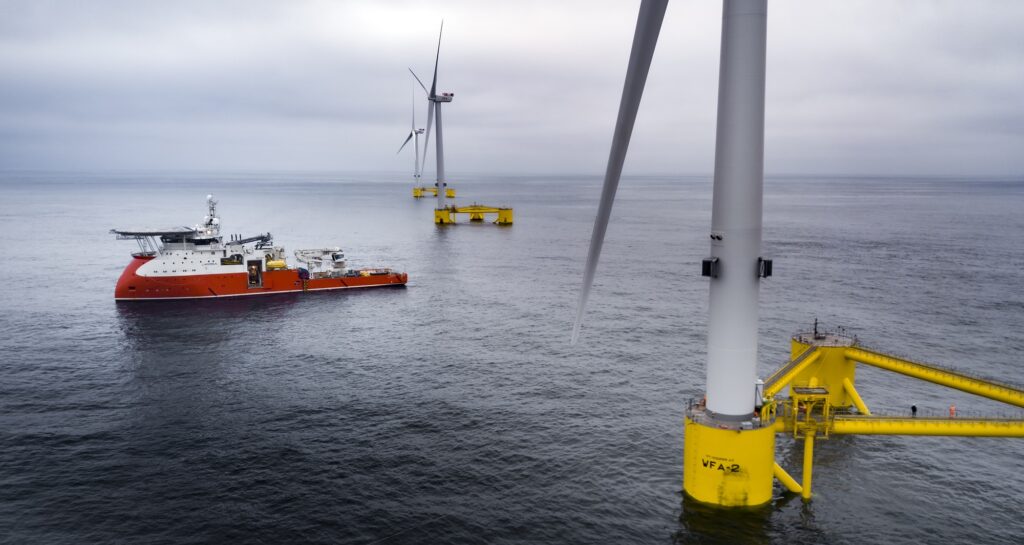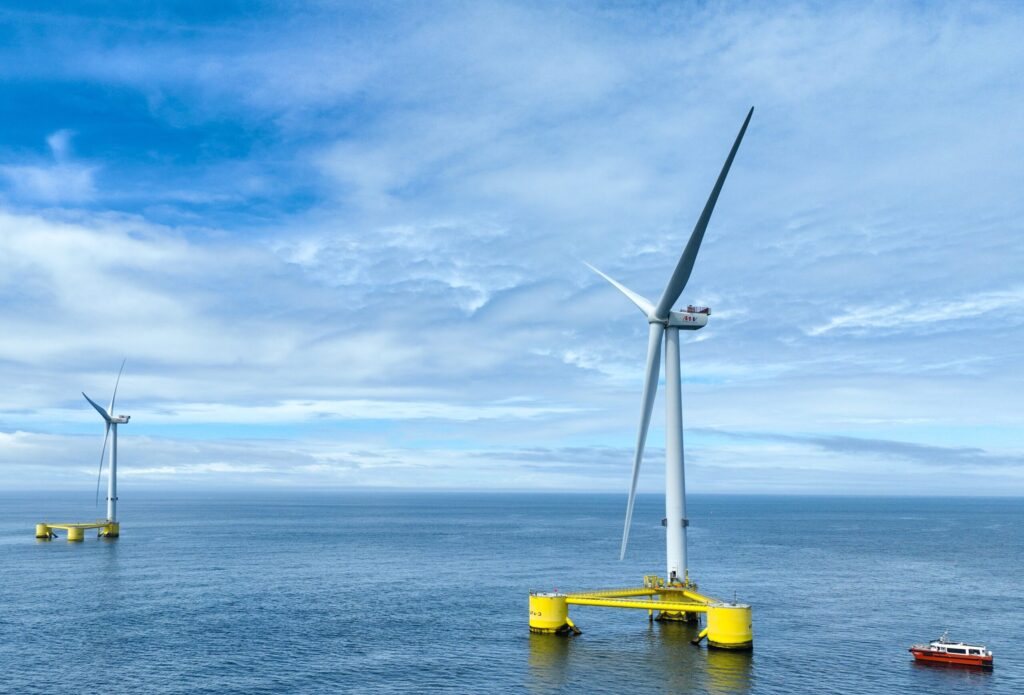By Ellen Jump, Project Engineer and Rising Star at Global Offshore Wind 2021
Floating offshore wind (FOW) is an essential ingredient for the UK’s energy future. Only by pushing installations into deeper waters will we be able to meet our Net Zero targets for renewable energy output by 2050.
This is one of the key areas of my work and as a Rising Star at this year’s Global Offshore Wind, I’m keen to use this platform to put floating wind at the centre stage within the industry’s development and deployment priorities.
Floating wind technology is rapidly developing and costs are reducing. Industry analysis even suggests floating offshore wind could be “subsidy free” by 2030. However, this requires both a significant scale up in deployment, and targeted innovation. In my role as a Project Engineer in the Floating Offshore Wind Centre of Excellence, I am responsible for overseeing the delivery of a portfolio of projects which shall support the growth of the industry and drive innovation. Here we look at a few areas where innovation is required, and whether we’re on track to scale up deployment.
Turbines and Support Structures
If the offshore wind industry is to adopt the mass deployment of floating wind, optimising the design and manufacture of next-generation turbines and support structures is essential to building bigger turbines in deeper waters.
Right now, there are 9.5MW floating wind turbines in UK waters, but it’s anticipated that 15MW turbines will be used in FOW by 2030, increasing further to 20MW later in the decade. These will be huge machines – Vestas Wind Systems recently announced their V236-15.0MW which is set to be the world’s largest with 115.5m long blades. The rapid growth in the scale of these turbines is a key driver of cost reduction in floating wind which is expected to reduce in cost even quicker than fixed bottom wind did.
In order to move into deeper waters the fixed-bottom support structures of monopiles or jackets need to be replaced by floating substructures. There are a number of different designs in development and currently being demonstrated. Design optimisation and advanced manufacturing techniques will be needed to enable the scale of manufacture anticipated and to keep costs low. There are also significant supply chain and infrastructure requirements associated with the manufacture and installation of these substructures.
Dynamic Cables
Subsea cables remain one of the industry’s biggest headaches – with failures that can arise from minute defects, spiralling into big cost consequences and months of lost generation, investigation and repair work.
Dynamic cables do exist currently, and have been developed and demonstrated at 66kV. Dynamic cables in general are more costly to manufacture than traditional static power cables, and require careful fatigue design. Dynamic cable systems will also require additional ancillary components such as buoyancy modules, which have been widely used in oil and gas and offer a great opportunity for UK-based supply chains to utilise existing experience, but at much increased volumes.
As turbines increase in size it’s likely that higher voltage inter-array cables up to 132kV will be required. There have been a small number of 132kV cables designed and manufactured to date, but work is needed before they are widely proven, and manufactured at scale to support commercial wind farms. Similarly, as sites move into deeper waters it’s likely that floating offshore substations will be desired, which require high voltage (>220 kV) dynamic export cables. Development of these products is a major technological requirement for the industry.
Mooring Systems
Another new system required for floating wind in comparison to fixed-bottom is the mooring system, which provides a station-keeping function and can also help stabilise the platform, limiting the floater motions. Whilst similar mooring systems have been deployed in oil and gas applications, the economic considerations and required scale of supply for floating wind is very different. The change in loading on the system is also not insignificant. If we consider a circa 1GW wind farm made up of 67 15MW turbines then, depending on the mooring system used, anywhere from around 200 – 530 mooring lines might feasibly be required, with each line somewhere between 500m and 1km in length. Obtaining sufficient quantities of chain, synthetic rope or wire rope material (and associated accessories) will be a major challenge as floating wind is commercialised.
Smart O&M
As floating wind farms appear on the horizon across the UK coastline, the industry must also develop the smart O&M solutions that will inspect, repair and maintain these wind farms.
ORE Catapult recently conducted analysis that showed within 10 years a scenario will be feasible at offshore wind farms with robots working semi-autonomously (that is, under the remote supervision of humans and only requiring technicians for intervention offshore when essential) and by 2050, such a system could be capable of planning its own missions and conducting them autonomously at ‘wind farms of the future’ that are built for repair by resident robots.
With floating wind farms even more remote than fixed-bottom, and sites often harder to access due to severe conditions and small weather windows, robotic and autonomous solutions will play a crucial role in their operations and maintenance.
Ports and Infrastructure
Another thing to bear in mind is that as turbine rating and size increases there will be a requirement for supporting infrastructure and equipment to also grow – we will need larger, deeper ports, with bigger cranes and vessels required for fabrication and installation.
The UK Government has big investment plans for port developments to support offshore wind including Able Marine Energy Park (AMEP) in the Humber, and Teesworks Offshore Manufacturing Centre which will include blade manufacturing facilities. These are great developments, and the new deep-water quays at AMEP could potentially be used in future for float-out of the substructures required for floating wind. The Scottish Government’s plans to alter the freeport model to better fit with Net Zero and Wellbeing Economy priorities are also very interesting, and could see Scotland developing world leading sustainable ports. There have already been a number of port and harbour investment commitments across Scotland, including at Port of Nigg, Leith and Dundee and there are specific mentions of FOW in Ardersier and Stornoway’s development plans.
Port and infrastructure development will take time, and require significant investment, and it’s likely that UK wide planning and investment will be required to enable the deployment of FOW at the required speed, especially if we want to ensure high local content.
Are we on track?
With all that being said, I think we are in a good position to be able to deliver substantial cost reductions in floating wind, whilst creating opportunities for innovators, SMEs and the broader supply chain. There is a very real acknowledgement across the industry of the need for floating wind within the context of our wider Net Zero targets, and a lot of activity in the sector supporting the development of large scale projects. However, there is still a lot of work to be done – coordinated support from Government is needed to clearly outline the role floating offshore wind will play in the UK’s future, and to support the required development of infrastructure and supply chain capability. This is particularly important if we are to maximise potential benefits to the UK through local manufacturing and installation, creating and sustaining jobs and enabling a just transition.
Photo of the Kincardine Offshore Wind Farm project courtesy of Principle Power




